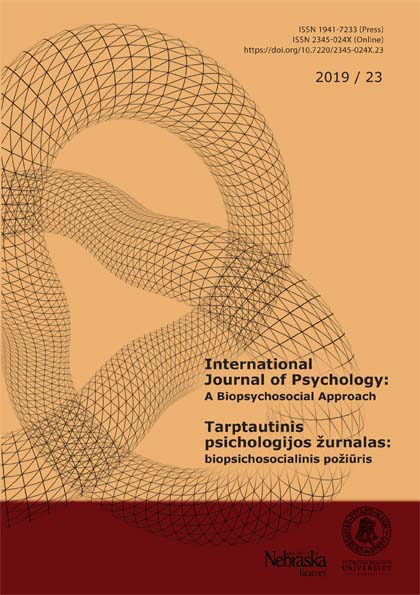Neuropsychological and/or Psychological Factors of Children’s Traumatic Behavior Under the Age of 10 Years
Neuropsychological and/or Psychological Factors of Children’s Traumatic Behavior Under the Age of 10 Years
Author(s): Ekaterina Zakharchuk, Evgeniy Dotsenko, Tamara Khvesko, Julia AndrejevaSubject(s): Social Sciences, Psychology, Neuropsychology
Published by: Vytauto Didžiojo Universitetas
Keywords: Re-traumatization; Children’s injuries; Interdisciplinary interaction; Psychological factors; Family circumstances;
Summary/Abstract: Many children become disabled during their entire lives (Alisic et al., 2014; Cohen, 2009; Draper, 2007). The historic UN Convention on the Rights of the Child, ratified by almost all the governments of the world, states that all children have the right to a safe environment and to protection from injury. The traumatic situation has several psychological factors contributing to the injury and to the characteristic consequences (Shi, 2015). These factors relate to the children’s living conditions and social situations in which children participate (Bonander, 2017; Gregorovski, 2013; Loeb et al., 2011). The aim of the research is to reveal micro-social factors which lead to re-injuries in children aged 5–10: peculiarities of (pseudo) hyperactivity disorders, interaction between adults who are taking care of the children, daily traditions in families of injured children. Research methods and participants. The research sample (n=350) was drawn from the general population in Russia. The youngest participant was 5 years old and the oldest was 10. Research was conducted in Tyumen, Russia, Regional Clinical Hospitals, schools, and kindergartens in 2016–2019. Conclusions. True hyperactivity disorders were revealed in no more than 5% of children. Thus, here we deal with pseudo-hyperactivity. To reduce the risk of injury in children it is necessary to differentiate between two types of pathogenic factors influencing trauma: minimal brain dysfunction in children (biological) and parental behavior (social).
Journal: Tarptautinis psichologijos žurnalas: biopsichosocialinis požiūris
- Issue Year: 2019
- Issue No: 23
- Page Range: 153-164
- Page Count: 12
- Language: English

